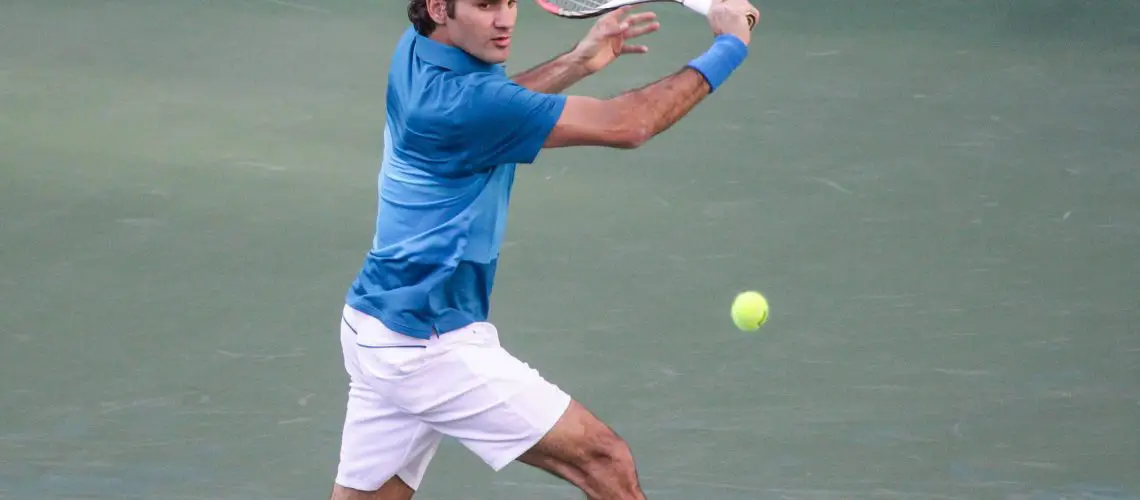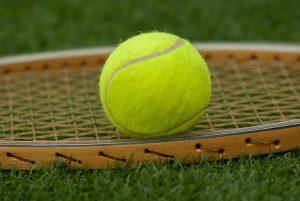We may earn money or products from the companies mentioned in this post.
Brief Overview of Tennis Shoes

Tennis shoes, also known as athletic footwear, are specifically designed for playing tennis They are crafted to provide support, stability, and comfort during intense movements on the tennis court These shoes have unique features that cater to the sport’s specific requirements
Purpose and Usage
The primary purpose of tennis shoes is to enhance performance and prevent injuries while playing tennis They offer excellent traction on different court surfaces, allowing players to move swiftly and change directions with ease Additionally, they provide cushioning to absorb impact and reduce stress on joints during high-impact movements like jumping and running
Types of Tennis Shoes
Tennis shoes come in various styles depending on the player’s foot type, playing style, and court surface The three main types of tennis shoes are:
-
Cushioned Tennis Shoes:
These shoes prioritize shock absorption and cushioning for players who require extra comfort due to joint issues or prolonged playtime -
Stability Tennis Shoes:
Designed for players with moderate pronation or those who need additional support around the midfoot area to prevent overpronation during lateral movements -
Lightweight/Speed Tennis Shoes:
Ideal for players who value agility and speed These shoes focus on providing lightweight construction without compromising durability or support
Importance of Quality Tennis Shoes in Performance

Comfort and Fit
Achieving optimal performance on the tennis court begins with wearing comfortable and well-fitting tennis shoes The right fit ensures that your feet remain secure within the shoe throughout a match, preventing unnecessary movement that could lead to blisters or discomfort Comfortable tennis shoes allow players to focus solely on their game, rather than being distracted by discomfort or foot pain
Injury Prevention
Wearing quality tennis shoes is crucial for injury prevention The unique design and features of tennis shoes help reduce the risk of common tennis-related injuries, such as ankle sprains, plantar fasciitis, and knee problems Tennis shoes provide stability and support to the feet and ankles, minimizing the chances of rolling or twisting an ankle during quick lateral movements Additionally, the cushioning in these shoes absorbs shock and reduces impact on joints, protecting them from excessive strain or injury
Factors Affecting the Lifespan of Tennis Shoes

Tennis shoes are an essential piece of equipment for any player, but their lifespan can vary depending on several factors Understanding these factors can help you choose the right shoes and maximize their longevity
Frequency of Use
One of the main factors influencing the lifespan of tennis shoes is how often they are used Casual players who hit the court occasionally will naturally put less wear and tear on their shoes compared to competitive players who play multiple times a week
Additionally, the number of hours spent on the court per week also plays a role The more you play, the faster your shoes will wear out So if you’re a dedicated player who spends several hours playing each week, you may need to replace your tennis shoes more frequently
Playing Surface and Court Conditions
The type of playing surface and court conditions can significantly impact the lifespan of tennis shoes Different courts like hard courts, clay courts, and grass courts have varying levels of abrasiveness that can wear down shoe soles at different rates
Outdoor courts tend to be rougher than indoor courts due to exposure to elements like dirt, rocks, and uneven surfaces Playing on outdoor courts may cause more rapid wear and tear on your shoes compared to indoor courts with smoother surfaces
Shoe Construction and Materials
The construction and materials used in tennis shoe manufacturing also contribute to their lifespan
1 Durability of Different Materials
The durability of different materials used in tennis shoe construction can vary significantly:
-
Uppers:
Synthetic materials like nylon or polyester mesh are lightweight but may not offer as much durability as leather uppers Leather, on the other hand, is more robust but can be heavier -
Outsoles:
The rubber compound used in the outsoles of tennis shoes can affect their durability Some brands use specific rubber compounds that offer better traction and wear resistance than others
2 Quality of Shoe Brands
The quality of the shoe brand itself also plays a role in determining how long they will last Reputable brands often invest in research and development to create durable tennis shoes that withstand the demands of the sport
In conclusion, several factors influence the lifespan of tennis shoes, including frequency of use, playing surface and court conditions, shoe construction materials, and brand quality Understanding these factors can help you make informed decisions when purchasing tennis shoes and ensure they last as long as possible
Signs that your tennis shoes need replacement

Tennis shoes are an essential piece of gear for any player, providing comfort, support, and stability on the court However, like any other sports equipment, they eventually wear out and lose their effectiveness It’s important to know when it’s time to replace your tennis shoes to avoid discomfort or potential injuries Here are three signs to look out for:
Worn out tread or outsole
The tread or outsole of your tennis shoes plays a crucial role in providing traction and grip on the court surface Over time, the constant running, sliding, and pivoting can cause the tread to wear down If you notice significant bald spots or smooth areas on the sole of your shoes, it’s a clear indication that they have reached their limit
Cushioning loss or compressed midsole
The midsole of your tennis shoes is responsible for cushioning impact and absorbing shock as you move around the court With regular use, the cushioning materials can get compressed, leading to reduced shock absorption and loss of comfort If you feel like your feet aren’t getting enough support or if you experience increased foot fatigue after playing, it might be time for new shoes
Damaged upper or unstable support structure
The upper part of your tennis shoes provides stability and holds your foot in place during lateral movements Over time, the upper can become damaged due to wear and tear or frequent use on abrasive surfaces like hard courts If you notice visible cracks, tears, or any instability in the shoe’s support structure while playing, it’s a clear sign that they need replacement
Knowing when to replace your tennis shoes is vital for maintaining optimal performance and preventing injuries on the court By keeping an eye out for these signs of wear and tear, you can ensure that your footwear remains supportive, comfortable, and capable of handling the demands of the game
Maintaining and Increasing the Lifespan of Your Tennis Shoes

When it comes to your precious tennis shoes, proper care and maintenance are essential for ensuring their longevity By following a few simple techniques, you can keep your tennis shoes in top shape and extend their lifespan significantly
Proper Care and Cleaning Techniques
One of the first things to consider is how you clean your tennis shoes While it may be tempting to toss them into the washing machine for convenience, hand washing is often a better option Using a mild detergent mixed with warm water, gently scrub away dirt and stains using a soft brush or cloth This method allows you to pay attention to specific areas that need cleaning without causing any damage
Drying your tennis shoes properly is equally important Instead of throwing them into the dryer, opt for air drying Placing them in direct sunlight or near a heat source can cause shrinkage or distortion Instead, stuff your shoes with newspaper or use shoe trees to help maintain their shape while they dry naturally
Alternating Between Pairs of Shoes
If you’re serious about prolonging the lifespan of your tennis shoes, consider investing in multiple pairs and rotating them regularly Alternating between different pairs gives each one sufficient recovery time between uses This prevents excessive wear and tear caused by repetitive use over a short period
Investing in Higher Quality Options
Lastly, when it comes time to replace your worn-out tennis shoes, consider investing in higher quality options that are designed for durability While they may come at a slightly higher price point initially, these well-made shoes tend to last longer due to superior materials and construction methods
In conclusion, taking proper care of your tennis shoes will not only increase their lifespan but also ensure that you perform at your best on the court By hand washing, air drying, alternating between pairs, and investing in higher quality options, you can keep your tennis shoes in excellent condition for many matches to come
Useful Links

How often do you replace your shoes?
When to Replace Your Running Shoes
Do Tennis Shoes Go Bad? (Expected Lifespan & More)
How To Tell When To Replace Sneakers For Basketball …
How Long Do Running Shoes Last? – When to Get New …
Best Time to Replace My Running and Walking Shoes
How Long Do Tennis Shoes Last
5 Signs You Need to Replace Your Old Running Shoes
When To Replace Worn Out Footwear
How long do running shoes last? And is it time for a new …
How Long Do Tennis Shoes Last? A Comprehensive Guide
How Long Do Sneakers Last if You’re Frequently Using …
HOW LONG SHOULD YOU KEEP YOUR GYM SHOES?
How Long Should Shoes Last?
How Long Do Tennis Shoes Last?
When to Replace Your Running Shoes
The 10 Best Men’s Tennis Shoes For 2023
Clay Court Shows Vs Hard Court Shoes
How Long Should Used And Unused Running Shoes Last?






